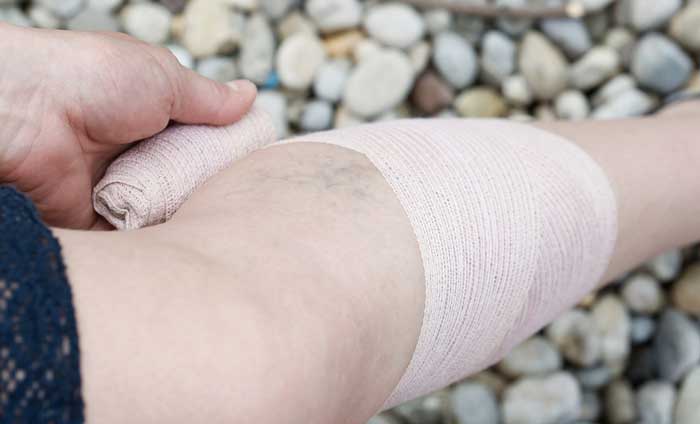When you’re planning a trip, it’s important to take your safety into consideration along with your excitement and packing. Deep vein thrombosis is a vein disorder that occurs when a blot clot forms in a deep leg vein, and it’s especially common among travelers over 50.
DVT Symptoms
Deep vein thrombosis, or DVT, is potentially fatal because a clot could travel to the lungs and cause a pulmonary embolism. The condition usually occurs in the calf, and since the main cause is sluggish blood flow due to long periods of inactivity, it presents a risk to travelers taking a long plane or car rides.
Many travelers will spend two hours or more sitting in one spot during a long trip. This slowing blood flow can result in clotting, obstructing venous return, and cause your legs to swell. Anyone who is older and has taken a long plane flight will be familiar with the swelling you experience in the foot and calf areas. This swelling happens to most people, but it is more noticeable for someone who is suffering from a vein disorder.
The most common sign of DVT during a journey is sudden unexplained pain in your calf, accompanied by swelling. DVT is a serious condition, but there are simple steps that can be taken to prevent it from occurring during long periods of travel. Here are five key ways to prevent DTV while traveling.
1. Stay Hydrated
Drinking plenty of water is important during any long trip. Dehydration thickens your blood, which increases your risk of a blood clot. The dry air in an airliner contributes to your body’s loss of water, so make sure you hydrate during the entirety of your trip. Try to avoid alcohol and coffee, as they also cause dehydration.
2. Move Around
One cause of DVT is sluggish blood flow, which you can prevent by getting up frequently and walking along the aisle of the plane. You stand up and walk around at least once every two hours. If you are on a long car ride, stop every two hours to get out of the car and get your blood flowing.
Shifting your weight on alternate feet is necessary to achieve adequate blood flow. So, walking is key to getting the blood flowing and decreasing your chances for DVT.
3. Take Medicine
Taking aspirin before a flight can go a long way in reducing your risk of DVT. Aspirin is a blood thinner, which means it can prevent blood platelets from clumping together and creating a clot. However, remember to consult with your doctor before using drugs like aspirin as a preventive measure, since they have a variety of possible side effects.
4. Wear Compression Stockings
Compression stockings are special stockings or socks that apply a pressure gradient to your lower leg in order to maintain blood flow and help reduce swelling. They are available at drug stores and online. They typically start at around $35 a pair.
Compression stockings are most often used as a form of therapy after an individual is recovering from DVT, but the stocking can also be preventative. Buy a stocking with at least mild compression strength (15-20 mmHg). This is especially helpful for travelers who have mild spider veins, slight varicose veins, and/or aching legs. Wear these stockings anytime you are traveling for a long period to help keep your blood flow healthy.
5. Seek Medical Attention When Needed
After a trip, if you suspect you are suffering from DVT, seek medical attention immediately. The sooner you get help, the better you’ll be able to be treated. Remember that DVT is a medical emergency, and immediate treatment can be vital to your health.
Wherever and however you’re traveling, use these measures to help prevent DVT and promote senior travel safety. By giving attention to your health, you’ll be able to relax, have fun, and make the most of your trip.




